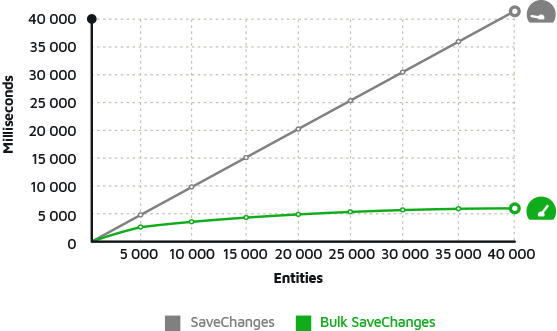Entity Framework Merge Records Discover How to Upsert Entities
How to Bulk Merge?
If you have data (list of entities) which have both new and old records. SaveChanges requires one database round-trip to check if the entity already exists and one round-trip to insert or update the entity.
If you save 10,000 entities, 20,000 database round-trips will be performed which is INSANELY slow.
StackOverflow Related Questions
- MERGE in Entity Framework
- How can I use Entity Framework to do a MERGE when I don't know if the record exists?
Answer
Entity Framework Extensions library adds the BulkMerge extension method to the DbContext. BulkMerge offers great customization and requires the minimum database round-trips as compared to SaveChanges.
// Easy to use context.BulkMerge(list); // Easy to customize context.BulkMerge(customers, options => options.ColumnPrimaryKeyExpression = customer => customer.Code);
MERGE all entities from the database. A merge is an UPSERT operation, all rows that match the entity key are considered as existing and are UPDATED, other rows are considered as new rows and are INSERTED in the database.
Performance Comparisons
| Operations | 1,000 Entities | 2,000 Entities | 5,000 Entities |
|---|---|---|---|
| SaveChange | 1,000 ms | 2,000 ms | 5,000 ms |
| BulkMerge | 65 ms | 80 ms | 110 ms |
ZZZ Projects
